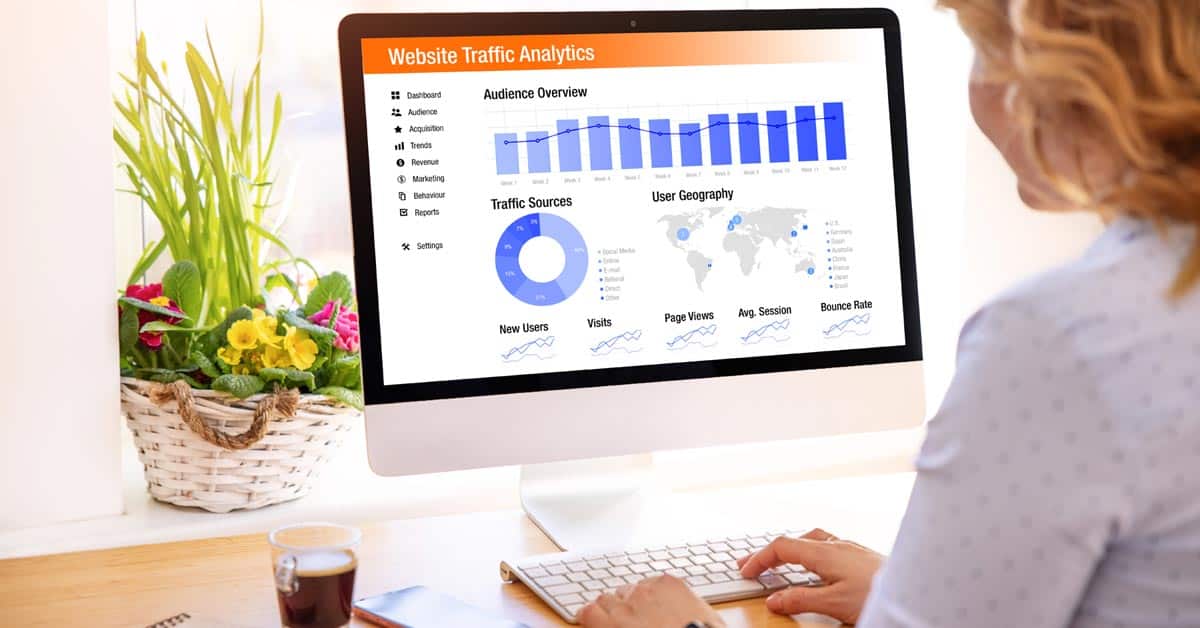The product page is arguably the most popular and important page on your website as an eCommerce store. This is where potential customers go to research the products you offer, view images, look at reviews and ultimately make purchasing decisions. It’s crucial to optimise your product pages for search engines so they can be easily discoverable by potential customers.
If you want to know the key elements you should focus on to optimise your product pages for SEO and drive more traffic to your eCommerce site, then keep reading.
Use descriptive and keyword-rich product titles
The first thing a potential buyer will see when they open your product page is the listing name of the item you’re selling, better known as, a product title. Conveniently enough it is also one of the first thing search engines will look at when determining how to rank your page. To optimise your product pages for SEO, ensure your product titles are descriptive and include relevant keywords.
For example, “Men’s Woven Terry Pop Over Shirt” rather than just “men’s Shirt”. This not only tells the customer exactly what they’re looking for but helps search engines understand the relevance of your page.
Optimise your product descriptions
Optimising your product description is an important element to focus on when optimising your product pages for SEO. Ensure they are skimmable by using short, concise sentences while remaining detailed and informative, providing potential customers with all the information they need to make a purchasing decision. They should also include relevant keywords but remember to write with the user in mind.
Google’s main goal is to deliver useful, quality content to meet the needs of real people, meaning optimising for users will ultimately drive search results. So, be careful not to overdo it because search engines are sophisticated enough to detect keyword stuffing, and it can hurt your rankings.
Optimise your images
Images are an essential part of the customer purchasing journey. It creates a visual of the product and entices the customer to make a purchase. In eCommerce, a customer can’t physically try on a piece of clothing or accessories so you must include photos that clearly show the features of a product.
These images also play a big role in SEO. Make sure to use images that are optimised for the web by compressing them to reduce the file size without sacrificing the quality. This will reduce your website loading speed and give you the potential to rank higher because speed is used as a ranking factor.
Search engines can’t view a picture to understand what it is, instead, they rely on Alt texts. Alt texts are HTML attributes that are added to an image tag to describe the image to users such as the visually impaired who use screen readers. It is also used by search engines to understand the image and improve searchability, increasing the likelihood of your image ranking on google images – include keywords in your alt tag if it describes the image.
Use structured data
Structured data is a code that you place on your website that provides search engines with additional information about your product pages. Some examples of eCommerce structured data are product names, prices, availability, and reviews. By including these on your product pages you can help search engines understand the content on your pages, ensuring your products are showing up under the right categories, and it can increase CTR.
If you would like to know more about structured data or how to add structured data to your site, HubSpot has a great guide.
Optimize your internal linking structure
Internal linking is the process of linking to other pages within your website, and it’s an important element of SEO.
Google crawls websites by following links. When it comes to eCommerce, it’s especially important to optimize your internal linking structure to help search engines understand the structure and hierarchy of your site. Often, the homepage holds the most link value, so, make sure to link to your product pages from your homepage and other relevant pages on your site.
Get reviews and ratings
Reviews can boost social trust and authority in potential customers and have a big impact on your product page SEO. Search engines notice reviews for site rankings and consider them to be a strong signal of the quality and relevance of your products, crawlers tend to favour the higher-rated websites and rank them higher. Encourage your customers to leave reviews and ratings on your products, and make sure to reply to reviews in a timely and professional matter whether they are good or bad.
Optimise for mobile
More than half of global website traffic comes from smartphones, with more people using their mobile devices to make purchases, google now prioritises mobile-friendly sites when determining your search ranking. It’s essential to make sure your product pages are optimised for mobile. This means ensuring that your pages load quickly, are easy to navigate, and incorporate a responsive design for smaller screens. You should also make sure that your product images are optimized for mobile and that your product descriptions are easy to read on a mobile device.
Using the SEO tips mentioned above for your product pages is essential for driving more traffic and conversions to your eCommerce site. By focusing on optimising your product titles, descriptions, images, linking, ratings, and mobile optimisation, you can improve the visibility of your product pages.
Remember to keep your content fresh and perform regular audits to check for any errors and rectify them as soon as possible. For a free site health check, visit our SEO page.





